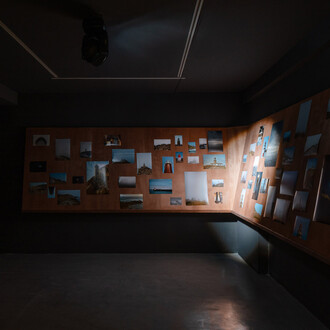Throughout his career as a sculptor, Jaume Plensa (Barcelona, 1955) has drawn on spirituality, the body and collective memory as the primary sources which tie together his visual artwork. Literature, psychology, biology, language and history become strategic tools in the creation of his work, and, through a broad spectrum of materials — steel, cast iron, resin, glass, water, sound — Plensa lends weight and physical volume to the components of the human condition and the ephemeral.
In this instance, the invisible forms the essence of his intervention in the Palacio de Cristal: a group of steel mesh sculptures which take the space to draw the incomplete faces of figures hanging in the air, intersected by light and suspended in time.
As a multidisciplinary artist, Jaume Plensa has experimented equally with etchings, drawing, sound, video and even stage design. He is also one of Spain’s foremost artists internationally, and has lived and worked in Germany, Britain, France and the USA.
Following his first solo exhibition in 1980 at the Fundació Joan Miró in Barcelona, his work has been displayed in museums worldwide, including the Galerie nationale du Jeu de Paume in Paris, France; the Lehmbruck Museum in Duisburg, Germany; the Nasher Sculpture Center in Dallas, USA, the Espoo Museum of Modern Art in Helsinki, Finland; the Toledo Museum of Art in Toledo, USA; the Musée d’art moderne et contemporain in Saint-Étienne, France; and the Madison Museum of Contemporary Art, USA.
A major part of his work is the site-specific sculptures and installations for public spaces – perhaps the best-known of which was Crown Fountain in Chicago in 2004. His works can also be seen in Britain, Japan, Germany, Sweden, Canada, the USA, Australia, Korea and China.
Moreover, he has received numerous national and international awards: the Medaille des Chevaliers des Arts et Lettres from France’s Ministry of Culture in 1993; the Premi Nacional de Cultura d’Arts Plàstiques from the Autonomous Government of Catalonia in 1997; Spain’s National Visual Arts Award in 2012; and the prestigious Velázquez Award for the Arts in 2013, both presented by Spain’s Ministry of Education, Culture and Sports.
In 2005 he was invested Doctor Honoris Causa by the School of the Art Institute of Chicago and received the Global Fine Art Award in Miami in 2015 for Together, his contribution to the Venice Biennale in the same year.
This project is in conjunction with a retrospective at the Museo de Arte Contemporáneo de Barcelona (MACBA) and features works stretching from the 1980s to the present day in a survey which reflects the dialogue, repeated across Plensa’s career, between the representation of the human figure and abstraction.
















